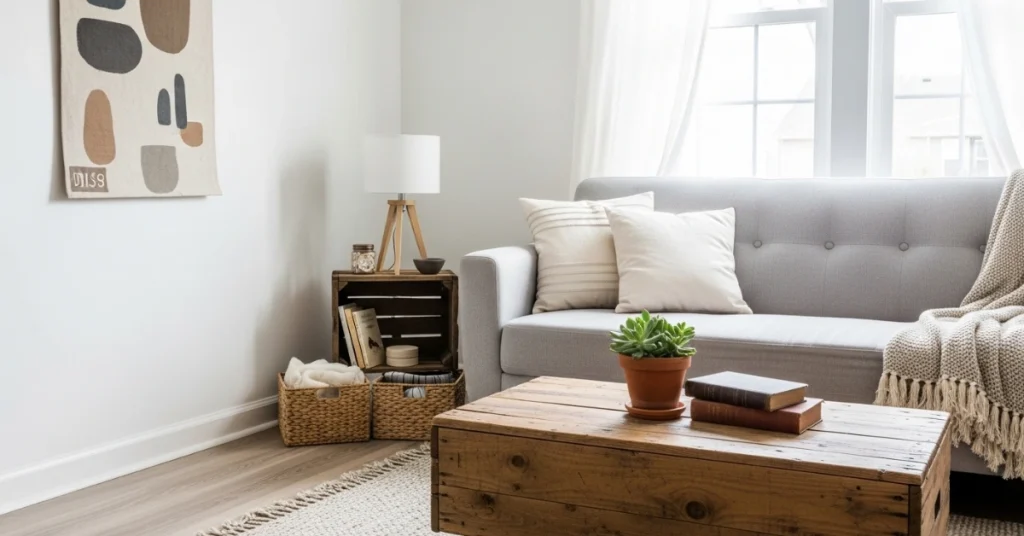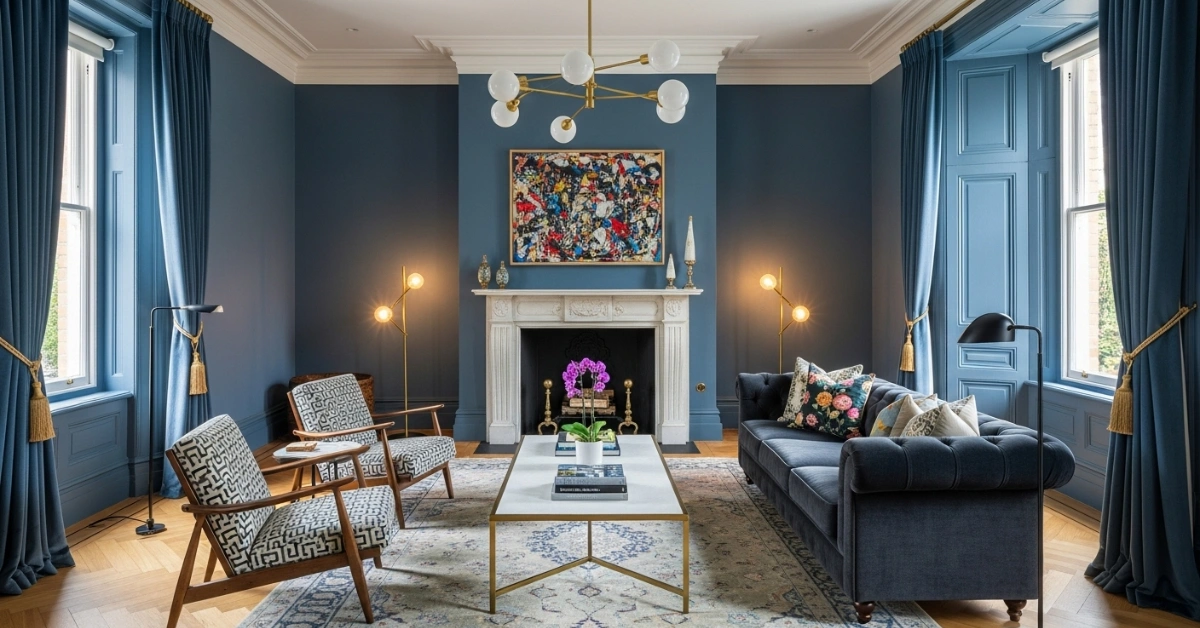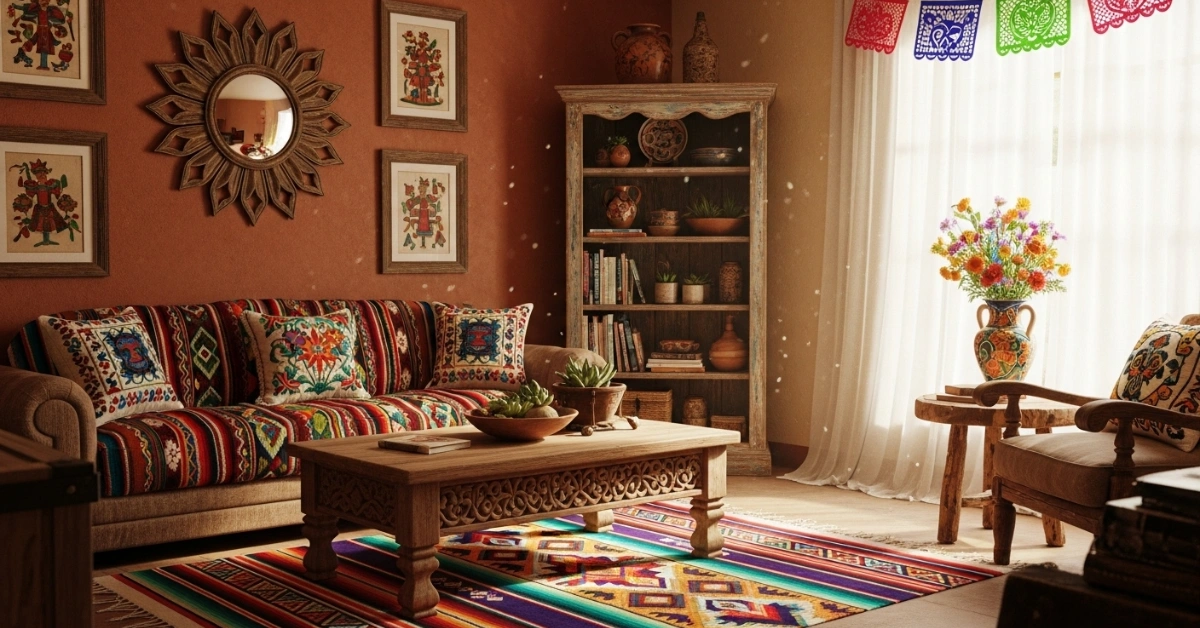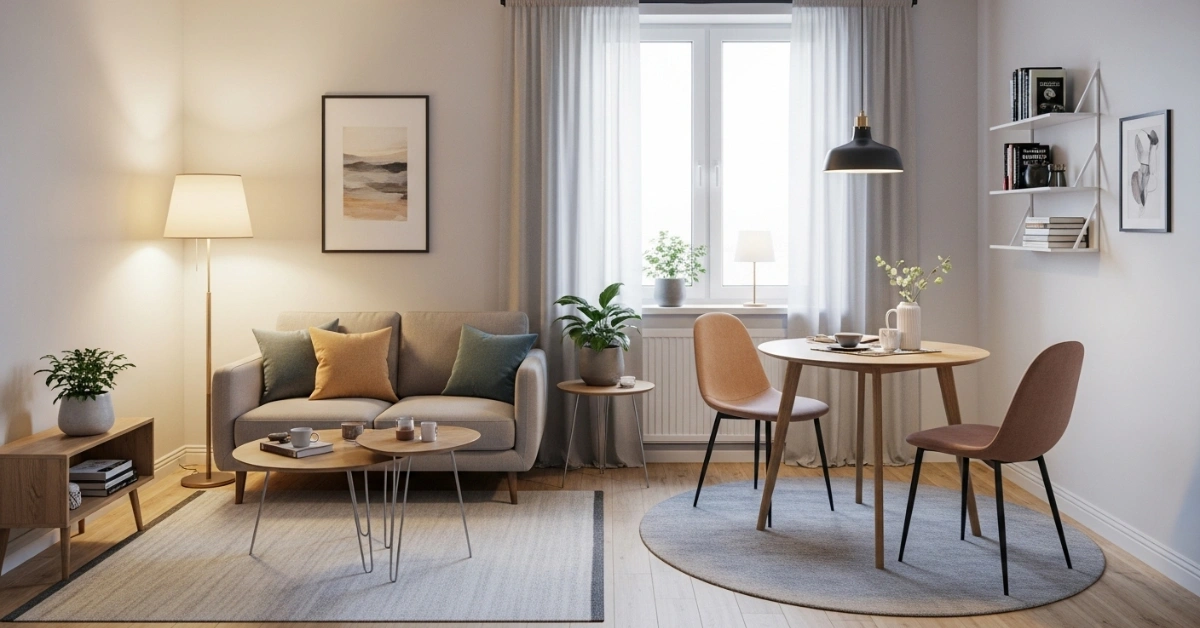How to Create a Minimalist Living Room That Inspires Serenity

In today’s fast-paced world, many people feel overwhelmed by clutter and chaos in their homes. A living room, meant to be a sanctuary for relaxation and connection, often becomes a catch-all for furniture, decor, and unused items, making it feel cramped and stressful. This is where a minimalist living room comes in a design approach that prioritizes simplicity, functionality, and beauty to create a calm, inviting space.
By embracing minimalism, you can transform your living room into a serene retreat that reflects your personality while staying practical for everyday life. This guide offers actionable tips, expert insights, and design inspiration to help you craft a minimalist living room that’s both stylish and timeless. From choosing the right furniture to mastering decluttering, we’ll cover everything you need to know to achieve a space that feels open, intentional, and effortlessly elegant.

What Is Minimalist Living Room Design?
Minimalist design is more than just sparse decor or empty spaces, it’s about intentionality. Rooted in mid-20th-century modernist movements, minimalism emphasizes clean lines, neutral colors, and purposeful choices. According to the Museum of Modern Art, minimalism in design emerged in the 1960s, focusing on “less is more” to create harmony through simplicity.
A minimalist living room strips away excess to highlight quality over quantity. Every piece, furniture, decor, or lighting, serves a purpose, contributing to a cohesive, uncluttered aesthetic. The result is a space that feels airy, functional, and calming, perfect for modern living.

Key Principles of Minimalist Design
- Simplicity: Focus on clean lines and uncluttered spaces.
- Functionality: Choose items that serve a practical purpose.
- Neutral Palette: Use soft, muted colors to create a cohesive look.
- Quality Over Quantity: Invest in durable, timeless pieces.
Benefits of a Minimalist Living Room
A minimalist living room offers more than just aesthetic appeal. Here’s why this design style is worth considering:
- Reduces Stress: A clutter-free space promotes mental clarity, as noted in a 2019 study by the Journal of Environmental Psychology.
- Easier Maintenance: Fewer items mean less cleaning and upkeep.
- Timeless Appeal: Minimalist designs stay relevant, avoiding trendy fads.
- Versatility: Neutral tones and simple layouts adapt to changing needs.

Interior designer Sarah Thompson says, “A minimalist living room allows you to breathe. It’s about creating a space where every element feels intentional, not overwhelming.”
Step-by-Step Guide to Designing a Minimalist Living Room
1. Declutter Ruthlessly
The foundation of a minimalist living room is a clutter-free environment. Start by assessing every item in your space.
- Sort Items: Keep only essentials that serve a purpose or spark joy, as popularized by Marie Kondo.
- Donate or Sell: Remove duplicates, unused decor, or outdated furniture.
- Storage Solutions: Use hidden storage like ottomans or built-in shelves to keep surfaces clean.

Example: In my own home, I cleared out a pile of old magazines and unused throw pillows, instantly making the room feel lighter and more spacious.
2. Choose a Neutral Color Palette
A minimalist living room thrives on soft, neutral tones like white, beige, gray, or taupe. These colors create a calming backdrop and make the space feel larger.
- Walls: Opt for matte white or light gray for a clean canvas.
- Accents: Add subtle pops of color, like sage green or soft blue, through cushions or art.
- Textures: Use natural materials like linen or wood to add warmth without clutter.

Pro Tip: Stick to a 60-30-10 color rule—60% dominant color (walls), 30% secondary color (furniture), and 10% accent color (decor).
3. Invest in Multi-Functional Furniture
Minimalism prioritizes function. Choose furniture that serves multiple purposes to maximize space.
| Furniture Type | Minimalist Options | Benefits |
|---|---|---|
| Sofa Bed | Sleek, low-profile | Doubles as guest bed |
| Coffee Table | Lift-top design | Offers hidden storage |
| Ottoman | Storage ottoman | Seating + storage |
Designer Insight: “Multi-functional pieces are game-changers in small spaces,” says interior designer Mark Evans. “A sleek sofa bed can transform your minimalist living room into a guest-ready space without sacrificing style.”
4. Embrace Clean Lines and Simple Shapes
Minimalist furniture avoids ornate details. Look for pieces with straight edges and smooth surfaces.
- Sofas: Choose low-profile, armless designs in neutral upholstery.
- Tables: Opt for rectangular or round tables with minimal embellishments.
- Shelving: Use floating shelves for a sleek, space-saving look.

5. Prioritize Quality Over Quantity
Instead of filling your living room with cheap, trendy items, invest in a few high-quality pieces that last. A solid wood coffee table or a durable linen sofa can elevate the space while standing the test of time.

Example: I once replaced three flimsy side tables with one sturdy oak table, which not only looked better but also saved space.
6. Incorporate Natural Light
Natural light enhances the airy feel of a minimalist living room. Maximize it with these tips:
- Sheer Curtains: Use lightweight fabrics to diffuse light softly.
- Mirrors: Place a large mirror opposite a window to reflect light.
- Window Cleaning: Keep windows spotless for unobstructed brightness.

According to a 2021 study by the American Psychological Association, natural light boosts mood and productivity, making it a key element in minimalist design.
7. Add Subtle Textures
Textures add depth without clutter. Incorporate natural materials like:
- Wood: A sleek wooden coffee table or exposed beams.
- Linen: Cushions or curtains in soft, breathable fabrics.
- Ceramic: A single vase or sculpture as a focal point.
Pro Tip: Limit textures to 2–3 types to avoid overwhelming the space.

Decor Ideas for a Minimalist Living Room
1. Use Statement Pieces Sparingly
One or two bold items can define the room without cluttering it.
- Art: A single large painting or framed print in neutral tones.
- Lighting: A sculptural floor lamp or minimalist chandelier.
- Rug: A textured, neutral rug to anchor the seating area.

Designer Quote: “A single statement piece, like a bold lamp, can draw the eye without disrupting the minimalist flow,” says designer Laura Chen.
2. Incorporate Greenery
Plants bring life to a minimalist living room without adding clutter.
- Low-Maintenance Plants: Try snake plants or pothos for easy care.
- Simple Pots: Use ceramic or concrete pots in neutral colors.
- Placement: Place one large plant in a corner or small pots on a shelf.

3. Keep Surfaces Clear
Minimalist living rooms thrive on clean surfaces. Limit decor on tables and shelves to one or two items, like a candle or a small sculpture.
Example: In a friend’s minimalist living room, a single ceramic vase on the coffee table became the focal point, proving less is more.

4. Use Hidden Storage
Keep clutter out of sight with smart storage solutions.
- Built-In Shelves: Perfect for books or media equipment.
- Storage Benches: Hide blankets or toys inside.
- Wall Units: Sleek cabinets that blend into the wall.

Common Mistakes to Avoid in a Minimalist Living Room
- Overloading with Decor
It’s tempting to add more decor, but this defeats the minimalist ethos. Stick to a few meaningful pieces.
- Choosing Trendy Over Timeless
Trendy items like neon signs or overly bold patterns can date your space. Opt for classic designs that endure.
- Ignoring Comfort
Minimalism doesn’t mean sacrificing coziness. Include soft textiles like cushions or throws for warmth.
- Neglecting Personal Touches
A minimalist living room should still reflect you. Add a family photo or a cherished heirloom in moderation.
Minimalist Living Room Inspiration: Real-World Examples
1. Scandinavian-Inspired Minimalism
Scandinavian design pairs minimalism with coziness. Think white walls, wooden furniture, and soft throws.
- Key Elements: Blonde wood, sheepskin rugs, and muted blues.
- Why It Works: It balances warmth and simplicity, perfect for small spaces.

2. Japanese Zen Minimalism
Inspired by Zen philosophy, this style emphasizes natural materials and open space.
- Key Elements: Tatami mats, low furniture, and bamboo accents.
- Why It Works: It creates a meditative, clutter-free environment.

3. Modern Industrial Minimalism
This style combines minimalism with raw textures like concrete or metal.
- Key Elements: Exposed brick, steel frames, and neutral upholstery.
- Why It Works: It’s bold yet uncluttered, ideal for urban lofts.

How to Maintain a Minimalist Living Room
1. Regular Decluttering
Set a monthly routine to reassess items. Donate or store anything that no longer fits.
2. Clean Strategically
Dust surfaces and vacuum under furniture to keep the space pristine.
3. Rotate Decor
Swap out a single decor piece seasonally to keep the room fresh without adding clutter.

Advanced Tips for a Polished Minimalist Living Room
1. Play with Negative Space
Negative space, the empty areas around furniture, creates balance. Avoid filling every corner.
2. Use Monochromatic Schemes
A single color palette, like shades of gray, creates a cohesive, sophisticated look.
3. Layer Lighting
Combine ambient, task, and accent lighting for depth.
- Ambient: Ceiling fixtures for overall light.
- Task: Table lamps for reading.
- Accent: Wall sconces to highlight art.
4. Experiment with Scale
Mix furniture sizes, like a large sofa with a small side table, to create visual interest.

Minimalist Living Room for Small Spaces
1. Use Vertical Space
Install floating shelves or tall, narrow cabinets to save floor space.
2. Choose Compact Furniture
Opt for a loveseat or armless chairs instead of a bulky sofa.
3. Reflective Surfaces
Mirrors or glass tables make small rooms feel larger.

Example: In a 200-square-foot apartment, I used a mirrored coffee table and sheer curtains to make the living room feel twice its size.
Budget-Friendly Minimalist Living Room Ideas
1. Shop Secondhand
Thrift stores offer timeless pieces like wooden tables or neutral sofas at a fraction of the cost.
2. DIY Decor
Create your own art or refinish old furniture for a custom look.
3. Repurpose Items
Use a wooden crate as a side table or baskets for storage.

Sustainable Minimalism
1. Choose Eco-Friendly Materials
Opt for furniture made from reclaimed wood or organic fabrics.
2. Buy Local
Support artisans for unique, sustainable pieces.
3. Reduce Waste
Donate old furniture instead of discarding it.

Designer Insight: “Sustainability and minimalism go hand-in-hand,” says eco-designer Mia Patel. “Choose pieces that are built to last and ethically sourced.”
Minimalist Living Room for Families
1. Kid-Friendly Minimalism
Minimalism can work for families with smart choices.
- Durable Fabrics: Use stain-resistant upholstery.
- Hidden Storage: Store toys in ottomans or baskets.
- Safe Edges: Choose rounded furniture to prevent injuries.

Example: A family I know used a storage ottoman and washable slipcovers to keep their minimalist living room kid-friendly and stylish.
Conclusion: Your Dream Minimalist Living Room Awaits
A minimalist living room is more than a design choice—it’s a lifestyle that promotes calm, clarity, and intentionality. By focusing on quality, functionality, and simplicity, you can create a space that’s both beautiful and practical. Whether you’re starting from scratch or revamping an existing room, this guide provide a roadmap to a serene, timeless living space.
Ready to transform your living room? Start by decluttering today and choose one or two tips from this guide to implement. Share your minimalist journey in the comments or explore our other design guides for more inspiration!
Begin your minimalist living room transformation today! Pick one tip from this guide, like decluttering or choosing a neutral palette, and see the difference it makes. For more design ideas, subscribe to our newsletter or follow us on social media for daily inspiration.






